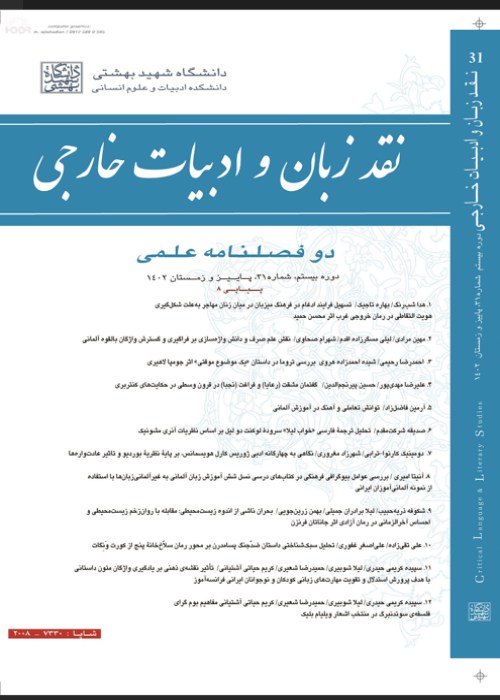The Portrait of the Writer as a Mosaicist: Lucien Dällenbach's Mosaics in Virginia Woolf's Fragmentary Writing
With the advent of modernity, Mimesis and the classical art and literature proved to be no more the adequate methods of representation. Strongly conscious of the changes of her era, Virginia Woolf is one of the first writers of the twentieth century to have used and developed the "fragmentary writing" as an aesthetic technique to reflect the change and the chaos in modern man's inner and outer world. Among the critics who have attempted to elaborate on the fragmentary style of representation in modern art and literature, Lucien Dällenbach employs the analogous figure of "mosaic" to explain the aesthetics of modern texts and the structure of fragmentary writing. The present article seeks to study Woolf's selected novels from Dällenbach's point of view in order to show to what extent Woolf's fragmentary texts can be considered mosaics.
Background of the Study:
A descendant of Geneva School, Lucien Dällenbach (1940-present) is a contemporary literary critic whose theories can be categorized as “thematic criticism”. For Dällenbach, "The Mosaic" is an important theme in and a metaphor for modern literature, through which one can best express and understand the link between sociology and the aesthetics. In his book entitled “Mosaïques : Un objet esthétique à rebondissement”, Dällenbach defines two contradictory poles as the two essential characteristics of a “mosaic text”: 1. the discontinuity of its components, 2. the unity of the whole. Hence, a “mosaic text”, in itself a reflection of a “mosaic world”, contains homogeneity of heterogeneity and is the solution for order in chaos, totality in fragmentation. According to Dällenbach, therefore, the best model to represent the pluralism and the diversity in the heart of modernity and at the same time the solution to prevent the dismantling of the coherence and unity is to be found in the mosaic.
This study attempts to read Virginia Woolf’s fragmentary writing in the light of Lucien Dällenbach’s “Mosaics”. To this end, the two main characteristics of literary mosaic according to Dällenbach -- discontinuity and unity -- are to be examined in the following elements of Woolf's fiction: The structure of her novels; the main elements of the novels (time and space (what Dällenbach studies as “spatialized temporality”), point of view (polyphony and multi-perspectivism according to Dällenbach), characterization (The mosaic of the self); the images and motifs (cutting and breaking vs. sewing and knitting); the themes (the theme of the distance of vision and the theme of order & disorder).
Through the analysis of the above factors, this article demonstrates how the mosaic model is interwoven in the form as well as in the content of Woolf's novels and that as a result, woolfian texts tend toward a coherent unity in spite of their disjointedness.
- حق عضویت دریافتی صرف حمایت از نشریات عضو و نگهداری، تکمیل و توسعه مگیران میشود.
- پرداخت حق اشتراک و دانلود مقالات اجازه بازنشر آن در سایر رسانههای چاپی و دیجیتال را به کاربر نمیدهد.


